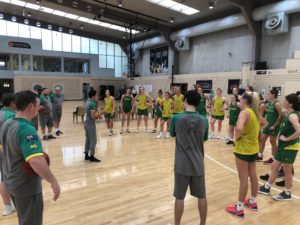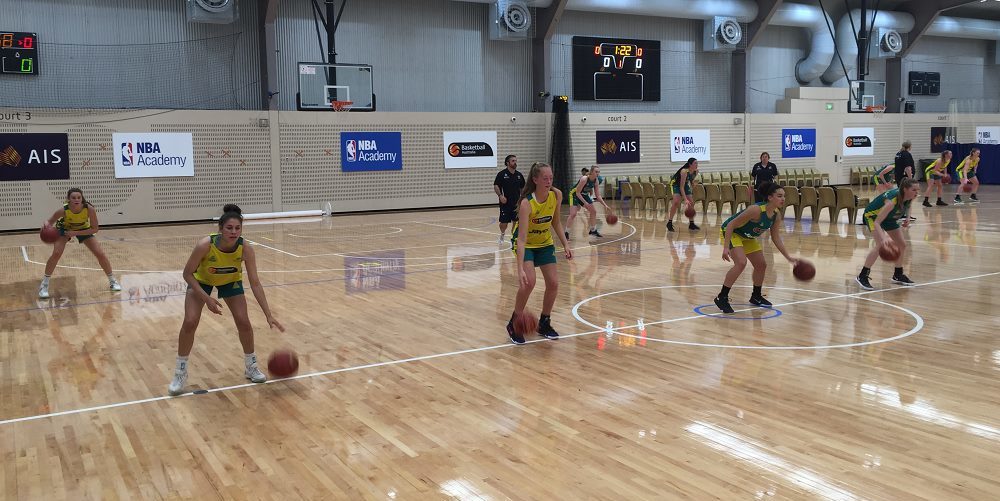The trends and methods in coaching are ever changing as coaches search for the most efficient ways to teach and develop players, maximise their practice time and of course, try to win games. Striking the balance between your core philosophies as a coach and blending in new methods is always a challenge for coaches at all levels of the sport.
One of the big advancements in coaching in the last 10 years has been a shift to a more “game sense” approach, designing drills and practices to mirror what athletes will encounter in the game setting. This encourages decision making, learning through exploration and problem solving.
At the 2016 Basketball Australia Coaches Conference, respected skill acquisition expert Adam Gorman spoke about coaches being “comfortable with the mess” and allowing players to explore, learn from their mistakes and engage in experiential learning. This mantra is now commonly quoted around the country as coaches try to provide a platform for athletes to learn in a game-like setting without too many confines.
These presentations made a significant impact on the coaches at the conference and has assisted in the teaching methods of so many coaches at all levels. Decision making is such an important part of our sport and assisting growth and development in this area is crucial for all coaches.

Striking the balance between a more “game sense” approach and the more traditional “block” drills format remains a challenge for coaches. The teaching and development of fundamentals still underpins all coaching and being able to ensure players are improving their fundamental platform is paramount to all coaching, especially at the youth level.
Basketball is not a game of “absolutes” and there is no one, correct way to coach and teach. Coaches need to bring their personality, influences and experience to the table and be authentic in the way they approach teaching. Combining some of the staples of the past with today’s research and learnings is key to being a progressive coach.
Coaching at the youth level is about three phases –
- Skill development
- Concept development
- Competitive development
In the Skill Development phase, the use of more traditional block drills is important, but again, it is about balance. Shooting is a great example, time invested in form and technique drills is time well spent and these drills provide important benefits in establishing good habits. But even in the form setting, coaches can add some creativity, constraints and movement elements and still achieve the same benefits.
Passing is another challenging skill to teach. This is a combination of fundamental skill (grip on ball, wrist action, follow through), vision and decision making. Drilling passing in the 2 v 0 setting has minimal value, but that is not to say it should never be done. Think about ways to add movement, such as pivoting or fakes, add constraints, introduce passive defence.
Coaches should look at their skill development “packages” and see if they can add some creativity without impacting the fundamental development. Training aids such as cones, “D-men”, pool noodles, resistance bands, bump pads may all provide some additional benefit to the fundamental drills without adversely impacting the teaching. Basketball has always been at the forefront of integrating training aids into teaching skill and it is always good to explore new ideas to assist.

In designing or changing drills, think about ensuring as many of your drills have a “TST” component –
- Time
- Score
- Target
Many of the traditional block drills can be “improved” by simply adding a time element, computing to a score or providing a target. Spend some in reviewing your suite of drills and see if you can add one or more elements of TST.
In the Concept Development phase, it is a lot easier to introduce more game sense components. But this does not mean every drill needs to be 2 v 2 or 3 v 3. There is still value in “on air” drills, as long as the movement mirrors an action that will happen in the game, or requires decision making by the athlete. Moving quickly to executing that skill or concept against defence is important of course, but the key remains striking that balance and being creative in the teaching.

Using advantage/disadvantage drills in this setting assists with decision making and mirrors many of the situations that occur in the course of a game. The game is a constant series of advantage/disadvantage situations, but in the drills or teaching, ensure there is some variation in how long that advantage exists. In the course of a possession, it may start 5 v 5, quickly move to 5 v 4 or 3 v 2 on penetration and then change again as defence rotates or recovers. The challenge is creating drill series that mirror how this occurs in a game.
Creativity has long been one of the strengths of Australian coaches. Be it trying to juggle court availability at the local stadium, lack of consistent numbers at training or managing three teams on one court, Australian coaches find a way. Applying this creativity and resourcefulness to your suite of drills will make for a better learning environment for the players and make practice more enjoyable for coaches and athletes alike.




Leave a Reply